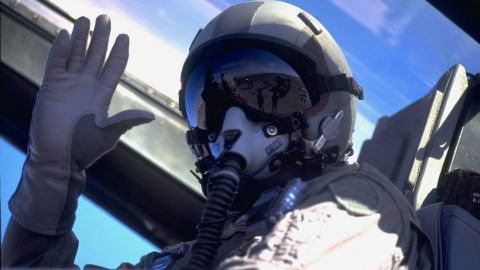Ukraine’s newly acquired F-16 fighter jets are now actively participating in electronic intelligence (ELINT) missions as part of the ongoing conflict with Russia.
Ukraine’s F-16s Engage in Electronic Intelligence Missions
These missions involve gathering critical information about enemy radar, communications, and electronic systems, helping Ukraine’s forces improve their defense strategies. These jets, donated by NATO countries, are also being used for combat operations and to escort other Ukrainian aircraft, ensuring their safety against Russian air defenses.
The use of F-16s for ELINT marks a significant shift in Ukraine’s air strategy. These aircraft are typically designed for air combat but are now being adapted to collect intelligence on Russian air defense systems like the S-400 and S-300.
These Russian systems can detect aircraft at long distances and launch guided missiles with high precision, making Ukraine’s need for electronic intelligence more crucial than ever.
ELINT involves intercepting and analyzing signals from enemy radars and communication systems. By understanding these signals, Ukrainian forces can locate Russian defense positions, detect operational patterns, and take necessary actions to avoid detection or strike key targets.
Ukraine’s Belgorod Assault Leaves Russia’s KA-52 and MI-8 Helicopters in Ruins
This capability gives Ukraine an edge in navigating a battlefield where advanced electronic warfare plays a major role.
F-16s Adapted for Electronic Warfare
Unlike dedicated surveillance aircraft used by larger NATO forces, Ukraine has had to modify its F-16s with additional equipment to perform Electronic Intelligence operations. Standard F-16s are not designed for electronic intelligence gathering, but with external pods mounted under their wings, these jets are now being used for signal collection.
One potential system is the AN/ALQ-131 electronic countermeasures pod, which is primarily used to jam enemy radar but can also be adapted for intelligence gathering.
By flying near Russian-controlled areas, these F-16s can scan and record electronic signals, allowing Ukrainian forces to develop countermeasures. This intelligence can be used to disrupt Russian radar systems, making it harder for them to track and target Ukrainian aircraft. However, this adaptation comes with challenges.
Ukraine Receives First F-16s: A Major Boost for Its Air Force
Equipping an F-16 with an ELINT pod means sacrificing some of its weaponry or extra fuel, which could limit its combat range and effectiveness.
Despite these limitations, Ukraine’s air force has managed to integrate ELINT capabilities into its F-16 operations. The jets work alongside older Soviet-era aircraft like the Su-27 and MiG-29, providing protection and intelligence support. This combination allows Ukraine to maximize its air power while continuing to operate with a diverse fleet of aircraft.
Western Support and Challenges Ahead
Ukraine’s ability to conduct Electronic Intelligence missions with F-16s is made possible by Western military aid and pilot training programs. Several NATO countries have donated F-16s to Ukraine, with the Netherlands, Denmark, and Norway among the key suppliers. In total, around 60 F-16s have been pledged, with additional deliveries expected in the coming months.
Ukraine’s F-16 Jet Crashes Amid Russian Attack
Training programs in the United Kingdom, France, and the United States have played a crucial role in preparing Ukrainian pilots for these advanced operations. These programs cover basic flight skills, air combat tactics, and specialized training for electronic warfare. With the increasing use of Electronic Intelligence missions, Ukrainian pilots must now balance combat roles with intelligence-gathering duties.
However, operating Electronic Intelligence missions in a warzone presents serious risks. Russia’s advanced air defense network, which includes long-range missile systems and electronic countermeasures, makes it difficult for Ukraine’s F-16s to conduct surveillance without being detected. Pilots may need to rely on low-altitude flying, electronic countermeasures, and real-time intelligence sharing with allies to avoid Russian missiles.
NATO’s F-16 Gamble Strengthens Ukraine, Provoking Russia
Ukraine’s F-16s are proving their worth by not only engaging in direct combat but also collecting valuable intelligence that can shape battlefield strategies. These missions highlight the importance of electronic warfare in modern conflicts and show how Ukraine is adapting to counter one of the most advanced military forces in the world. With more F-16s arriving and their role expanding, Ukraine’s ability to conduct ELINT operations will continue to be a key factor in its air campaign against Russian forces.

